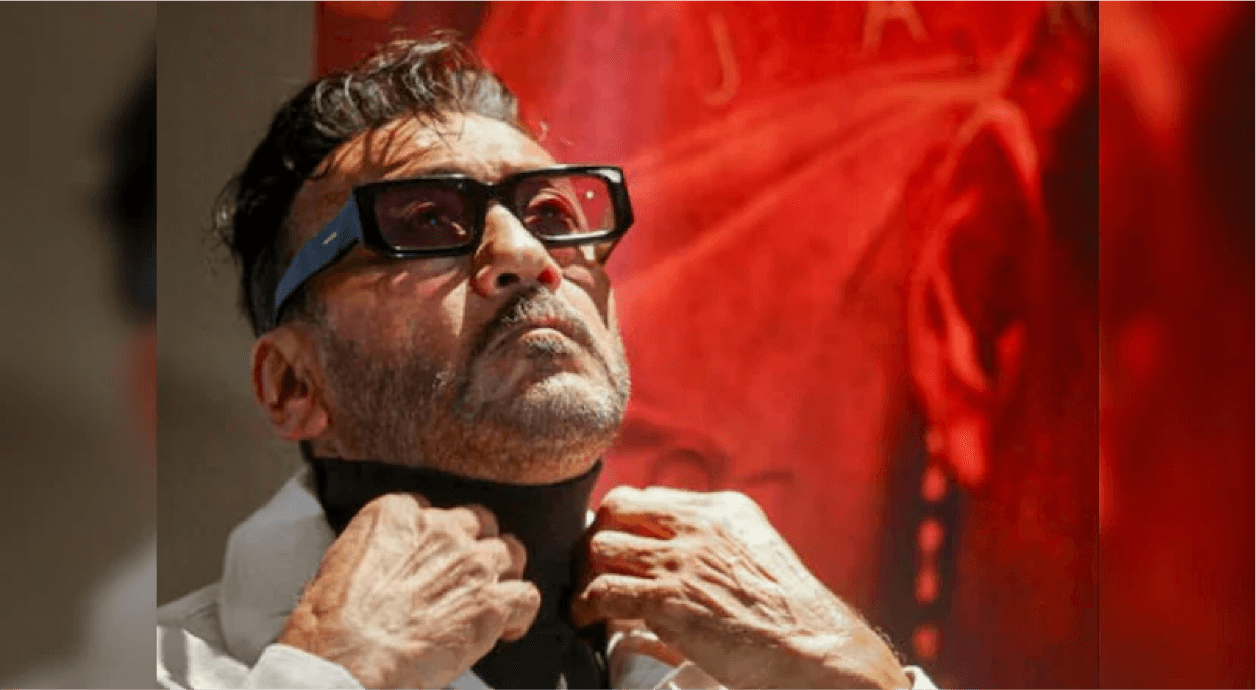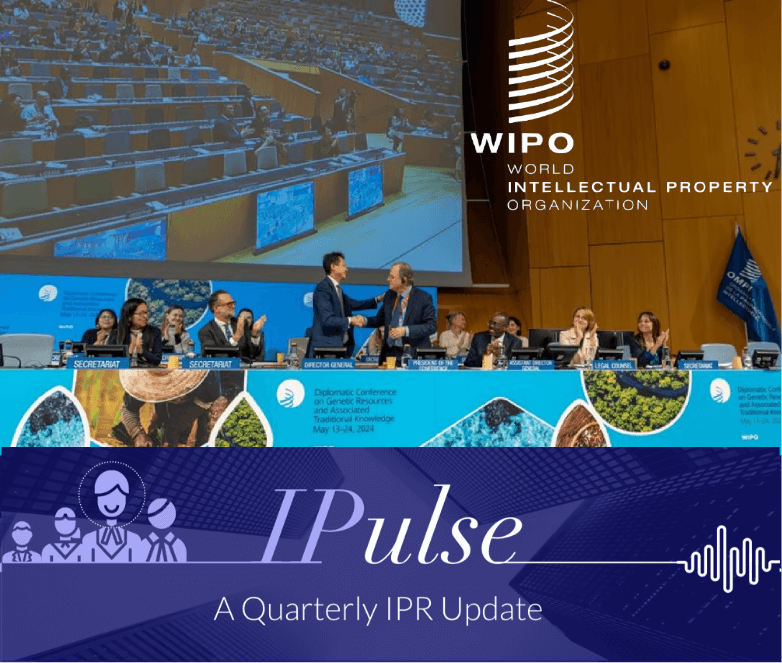Patents

WIPO Treaty on Genetic Materials
After 25 years of negotiations, WIPO adopted the Treaty on Intellectual Property, Genetic Resources, and Traditional Knowledge associated with Genetic Resources.1 The Treaty is a significant win for India. India has been a proponent of this for a long time.
The WIPO Treaty on Intellectual Property, Genetic Resources, and Associated Traditional Knowledge requires that Patent applicants must disclose:
For inventions based on genetic resources- the country of origin of genetic resources or, if unknown, the source of the genetic resources.
For inventions based on traditional knowledge associated with genetic resources- the Indigenous Peoples or local community providing the knowledge, or if unknown, the source of this knowledge.
If the applicant doesn’t have information on genetic resources or traditional knowledge, they must make a declaration stating so.
Contracting parties must guide applicants on meeting disclosure requirements and allow rectification of incomplete or erroneous disclosures.
Patent offices are not obligated to verify the authenticity of disclosed information.
Contracting Parties must make disclosed information available as per patent procedures while safeguarding confidential information.
Once the Treaty enters into force with 15 contracting parties, it will establish this new disclosure requirement in international law. It is a landmark development for the rights of Indigenous people and the local community.
Importance of Section 8(1) Details in Patent Litigation

In litigation, it is crucial for the patentee or applicant to disclose all the corresponding foreign applications along with their current status.
In an appeal2 by Google LLC before the Delhi High Court against an order of the Controller rejecting a patent application, the Court enquired the appellant as to whether the corresponding patent was applied before the European Patent Office (EPO). In response, the appellant submitted that the corresponding patent application before the EPO was abandoned, which, in fact, was rejected. Further, a divisional application of said corresponding EP patent application was also filed with an identical title, which was again rejected.
The Court reprimanded the appellant for not disclosing the correct details about the rejection of the corresponding EP application and the details of the divisional application that were both rejected for lack of inventive step.
The Court held that the disclosure requirements under the Act were not complied with and imposed cost on the Appellant for its conduct.
Pro-forma Responses to FER may Lead to Non-appealable Rejection

Source: IAM Media, India: Patent Prosecution
Applicants often file rushed, pro-forma responses to First Examination Reports (FER) at the last moment, which can lead to their application being rejected under Section 21(1).
It is important to understand that rejection under the said section is non-appealable.
In a recent case3, the applicant’s response only superficially covered one of the objections raised in the FER and neglected others. Further, the applicant did not file a request for an extension of the deadline.
The Controller rejected the application under Section 21(1). The Bombay High Court upheld the rejection, affirming it was rightly done under Section 21(1) and thus non-appealable under Section 117A. The Controller’s order explicitly indicated that it was made under Section 21(1) and not under Section 15 (A decision under Section 15 is appealable). The Court also held that compliance with all the requirements is necessary regardless of the merit of the explanations.


It is imperative for applicants to avoid filing a last-minute response. Even if there is a delay due to unavoidable circumstances, the response must cover all objections and meet all requirements under Section 21(1).
Is a 20-year Term from the Date of Application Sufficient for a Patent?

In an interesting development4, a writ petition was filed in the High Court of Calcutta challenging the constitutional validity of Section 53 of the Patents Act, which sets the patent term at twenty years from the application date. The petitioner argued that said section contradicts Section 11-A which grants provisional rights from the application’s publication date until its grant, excluding the right to sue for infringement until the patent is granted.
The petitioner contended that the patentees enjoy full rights only upon the grant of a patent and therefore the term of patent from the application date is unreasonable.

Source: Calcutta High Court
The Court cited Article 33 of the TRIPS Agreement which mandates a patent protection term of twenty years from the filing date and held that setting patent term is within the legislative competence of Parliament in alignment with the TRIPS agreement, leaving no scope for judicial interference.
The Court upheld the constitutionality validity of Section 53 stating that Sections 53 and 11-A are not mutually exclusive or contradictory. The Court explained the three stages of rights conferred upon an applicant/ patentee:
- From filing to publication: Preference over subsequent applicants.
- From publication to grant: Rights similar to a patentee except the right to sue for infringement.
- From grant to expiration: Full rights, including the right to sue for infringement.
High Court of Karnataka to form Intellectual Property Division (IPD)

Source: High Court of Karnataka
On June 20, 2024, the Chief Justice of the High Court of Karnataka constituted a sub-committee to draft rules for the establishment of an IPD.
Following the abolishment of the Intellectual Property Appellate Board (IPAB), the Karnataka High Court may be the fourth High Court to establish an IPD.
The High Courts of Delhi and Madras already have functional IPDs that have been instrumental in delivering key judgments and streamlining IP jurisprudence in India.
The High Court of Calcutta is also in the process of finalizing rules for its IPD.
Given Bengaluru’s status as India’s Silicon Valley, the Karnataka High Court’s IPD may soon rival the Delhi High Court’s IPD, which is currently the preferred venue for patent litigation.
Design

Pidilite vs Astral - A Precedent on Trade Variants and Mosaicing

Pidilite Industries Limited (“Pidilite”) sued Astral Limited (“Astral”) alleging that Astral’s SOLVOBOND containers infringed on their registered M-SEAL PV SEAL container design. The Bombay High Court (“Court”) held that Pidilite’s design was distinctive, unique, and validly registered.
The Court also clarified what constitutes a trade variant and mosaicing. It defined three factors for deciding whether a design is a trade variant:
- The nature and size of the article to which the design has to be applied,
- The utilitarian nature of the article, and
- If the article’s nature or size is such that only minor or small changes may be possible to be made, such minor or small changes may be sufficient or substantial enough to make the design new or novel unique.
The Court ruled that the features of Pidilite’s container design, taken as a whole, were not present in any of the prior cited designs, and therefore, the same cannot be termed as a trade variant.
Furthermore, the Court held that mosaicing, i.e., breaking down pieces from different articles and comparing them with the suit design, is not permissible. The design has to be looked at as a whole and cannot be segregated or dissected into separate integers. The Court observed that prior art and publications, when seen as a whole, are neither deceptively similar nor identical to Pidilite’s design.
Finally, the Court granted interim injunctive relief against Astral, thereby providing a temporary resolution to the dispute.


This case sets a precedent for future disputes in the realm of design patents. It emphasizes the importance of considering the design as a whole and discourages the practice of mosaicing. It also provides clarity on what constitutes a trade variant. That could have significant implications for manufacturers and designers in the future.
Media Laws

Lights, Camera, Legal Action: Jackie Shroff Stands Against Unauthorized Use of His Persona!

Source: The Indian Express, Delhi HC protects personality rights of Jackie Shroff, restrains misuse of name, image, voice without consent
In a significant legal development5, Bollywood actor Jackie Shroff has taken action to protect his name, image, and likeness from unauthorized online use. With a prolific career spanning over 220 films, Mr. Shroff’s persona has become well-established and widely recognized. This has led to a legal dispute involving multiple defendants accused of exploiting his brand without permission.
Mr. Shroff cited various awards and recognitions, and registered trade marks, such as ‘BHIDU’ and ‘Bhidu ka khopcha,’ to bolster his claims of personality and publicity rights. The lawsuit targeted unauthorized commercial uses of his personality by various defendants, alleging that these infringements diluted his brand equity and misappropriated his identity for commercial gain.
Defendant No. 1, The Peppy Store, was accused of selling wall art featuring animated images of Mr. Shroff. Despite arguments from their counsel regarding fair use and prior endorsement by Mr. Shroff, they agreed to remove the disputed content pending further clarification. Defendant No. 2, Frankly Wearing, and Defendant No. 3, Ice Poster, also faced accusations of selling merchandise using Mr. Shroff’s image and name. These defendants similarly agreed to cease such activities.

Source: Business Standard, Actor Jackie Shroff moves Delhi HC, seeks protection of personality rights
Significant objections were raised against Defendant No. 5, a YouTuber/content creator, for a video titled “JACKIE SHROFF IS SAVAGE (😂) JACKIE SHROFF THUG LIFE!” Mr. Shroff argued that the video, which edited his interviews with added graphics and captions like ‘Thug Life,’ misrepresented and tarnished his persona. However, the court noted that the term ‘Thug Life’ in contemporary culture often signifies a tough, resourceful persona and might not be derogatory. Given the video’s popularity and its nature as a form of artistic expression, the court decided to hear Defendant No. 5’s response before ruling on an injunction.
Defendant No. 6 and Defendant No. 7 were implicated in creating videos that distorted Mr. Shroff’s image and used profane language, harming his reputation. Defendant No. 13 was found to be operating an unlicensed AI chatbot mimicking Mr. Shroff, while Defendant No. 14 was engaged in selling wallpapers of the plaintiff, both of which were deemed to violate his personality rights.
The court acknowledged the complex balance between protecting celebrity rights and allowing freedom of expression and artistic creativity. It refrained from granting an ex-parte injunction against Defendant No. 5 but indicated the need for responses from all implicated defendants to proceed further.


This case highlights the critical need to safeguard celebrity personality rights in the digital era. Unauthorized use of a public figure’s name, image, or likeness can lead to significant commercial loss and damage to reputation. As digital infringement becomes more prevalent, an increasing number of celebrities are taking action to defend their rights and remain vigilant against misuse.
Ad Wars: NIVEA and POND’S Face Off in a Blue-Hued Comparative Dispute

In a recent legal battle6, Beiersdorf AG, the maker of NIVEA, challenged Hindustan Unilever Limited over alleged misuse of its distinctive blue packaging. The dispute centers on the use of the color Pantone 280C, which Beiersdorf claims uniquely identifies its NIVEA Crème. Despite not being registered in India, this color is protected under German law and integral to NIVEA’s brand identity.
Beiersdorf argued that Hindustan Unilever’s promotional campaign unfairly compared its NIVEA Crème with Unilever’s Pond’s products from different categories, misleading consumers by juxtaposing a heavy cream with a gel. The plaintiff provided evidence that the blue color and trade dress are closely associated with NIVEA, asserting that the comparison was not only misleading but disparaging.
The court reviewed the use of the distinctive blue color and found that the promotion was likely to mislead consumers by implying unfair comparisons. Consequently, the court issued an order restraining Hindustan Unilever from continuing with misleading promotional activities and comparing dissimilar products in a manner that disparages NIVEA.


This case highlights the tricky terrain of comparative advertising, where navigating the blue seas of brand identity and fair competition requires a steady hand. As brands fiercely protect their distinctive elements like color and packaging, it is crucial to walk a straight line to avoid sinking into a sea of legal disputes.
Ad World Overhaul! Supreme Court Mandates Self-declaration Certificate by Advertisers Before Releasing Advertisements

Starting June 18, 20247, advertisers/ advertising agencies in TV, radio, print, and digital media are required to submit a Self-Declaration Certificate to certify that their ads are truthful and compliant with regulations. The certificates, which must be submitted through the Broadcast Seva Portal for TV and radio ads and the Press Council of India’s portal for print and digital ads, aim to enhance transparency and consumer protection. No advertisement will be permitted without a valid Self-Declaration Certificate, ensuring that all ads meet relevant regulatory guidelines.

Later a clarification followed that only players in food & beverages and health sectors will be required to submit annual self-declaration forms. This update supersedes earlier advisories, limiting the mandatory submission of self-declaration forms to these two sectors only.


The Hon’ble Supreme Court’s directive and the Ministry of Information & Broadcasting’s subsequent implementation marks a significant step towards responsible advertising practices in India.
Copyrights

Copyright clash: The Battle of the Beats and the Big Bucks!

In a recent landmark decision8, the court has significantly reshaped the landscape of copyright law in India, particularly in relation to musical and literary works.
The case at hand involved a dispute between Vodafone and Saregama over the rights to exploit musical works. Saregama India Limited, a company known for its extensive collection of sound recordings, accused Vodafone Idea Limited, a major telecom service provider, of using these recordings as Value Added Services (VAS) in the form of pre-recorded Caller Ring Back Tone (CRBT) without proper authorization. Saregama sought both an injunction to stop the unauthorized use and damages for the infringement.
The dispute consolidated three suits involving Vodafone Idea Limited, a major telecom service provider, of using these recordings as Value Added Services (VAS) in the form of pre-recorded Caller Ring Back Tone (CRBT), the Indian Performing Rights Society Limited (IPRS), and Saregama India Limited. IPRS argued that Vodafone should pay royalties for using literary and musical works in CRBT, while Vodafone sought a declaration of non-liability. Additionally, Saregama aimed to prevent Vodafone from exploiting sound recordings without proper licenses.
The court reviewed the evidence and sided with Saregama. Vodafone Idea was ordered to stop using Saregama’s sound recordings without permission, and they were instructed to pay compensation to Saregama for the unauthorized use of their recordings. The Court emphasized that past agreements with IPRS and Saregama did not authorize Vodafone for such commercial exploitation.
In addressing the ownership and rights to royalties, the court rejected Vodafone’s argument that Saregama’s ownership of sound recordings negated the need for an IPRS license. The court held that the 2012 amendments to the Copyright Act, which recognized authors’ rights to royalties, took precedence over Saregama’s claims of ownership. Even though Saregama held first ownership of the sound recordings, the authors retained the right to royalties, which could not be waived or circumvented through contractual agreements.


This judgment reinforced the principle that authors’ rights to royalties are paramount and cannot be overridden by agreements between copyright holders and commercial entities. Authors and creators are now better protected under Indian copyright law, ensuring they receive fair compensation for their works, especially in the digital age. This decision underscores the importance of proper licensing and adherence to copyright provisions in the evolving media landscape.
- WIPO Press Release, Geneva, May 24, 2024, PR/2024/919. https://bit.ly/3YNZnyC
- Google LLC vs. The Controller of Patents, C.A.(COMM.IPD-PAT) 395/2022. https://bit.ly/4dmFIdu
- Sonalkumar Sureshrao Salunkhe vs. The Assistant Controller of Patents, 2024:BHC-OS:7309. https://bit.ly/4dIrkMl
- Gunjan Sinha vs. The Union of India (WPA No. 8691 of 2023). https://bit.ly/4fO2wV3
- Jaikishan Kakubhai Saraf Alias Jackie Shroff vs. The Peppy Store & Ors. CS(Comm) 389/2024. https://bit.ly/3M84Sk9
- Beiersdorf Ag vs. Hindustan Unilever Limited I.A. 7636/2021 In CS(Comm) 300/2021. https://bit.ly/4fKIZF8
- https://pib.gov.in/PressReleasePage.aspx?PRID=2022649. https://bit.ly/3X4jE1D
- Vodafone Idea Limited vs. Saregama India Limited & Anr on 17 May, 2024 (Calcutta High Court). https://bit.ly/3ArNDrw
Questions regarding the above developments
and their potential impact on your business?
Reach out to the client service team at ipconnect@walaw.in

To stay updated on our insights, subscribe here.
IPulse Editions

First Edition | IPulse | A Quarterly IPR Update
- 01 June 2024
The Indian Patent Office granted over one lakh patents in the year from 15-Mar-2023 to
14-Mar-2024 which amounts to 250 patents every working day. A record number of 1532 patent orders were issued in a single day!
If you would like a copy of the newsletter, reach us at ipconnect@walaw.in.

Second Edition | IPulse | A Quarterly IPR Update
- 20 August 2024
If you would like a copy of the newsletter, reach us at ipconnect@walaw.in.





